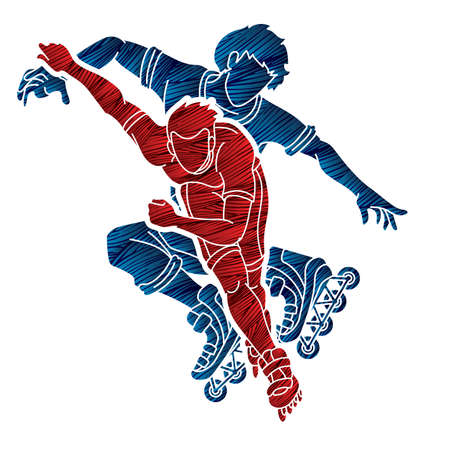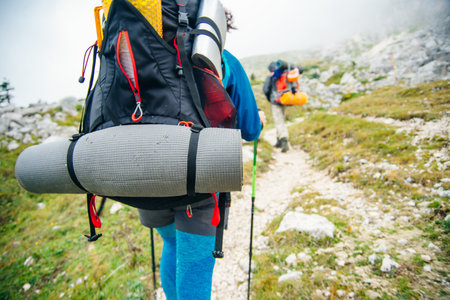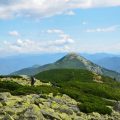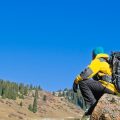Forging New Paths: Pioneers of American Hiking
When we think about hiking in America, it’s easy to picture crowded national parks, well-marked trails, and Instagram-worthy views. But before all this, there were fearless individuals who saw the wild unknown and decided to walk right into it. These early trailblazers weren’t just out for a stroll—they helped create the hiking culture we know today by exploring untamed land, mapping out new routes, and showing everyone that the outdoors was meant to be enjoyed by all.
The Spirit of Adventure
Long before GPS or detailed guidebooks, these pioneers relied on their wits and grit. They faced unpredictable weather, wild animals, and rugged terrain. Their journeys took them across thick forests, towering mountains, and endless plains. Each step they took became a path for those who came after them.
Meet Some Legendary Trailblazers
| Name | Known For | Legacy |
|---|---|---|
| John Muir | Exploring the Sierra Nevada; founding the Sierra Club | Helped establish national parks like Yosemite; inspired conservation efforts nationwide |
| Emma “Grandma” Gatewood | First solo female thru-hiker of the Appalachian Trail (age 67!) | Broke barriers for women in hiking; popularized long-distance hiking among everyday Americans |
| Benton MacKaye | Visionary behind the Appalachian Trail | His dream led to one of the world’s most famous long-distance trails—over 2,000 miles from Georgia to Maine |
| Colin Fletcher | Solo hikes across vast wildernesses; author of “The Complete Walker” | Made backpacking accessible; taught generations how to enjoy nature safely and respectfully |
How Early Hikers Changed America’s Outdoors Culture
Their stories are about more than just physical endurance—they’re about curiosity, courage, and a deep love for wild places. By mapping new routes and sharing their adventures, these pioneers inspired millions to trade city streets for mountain trails. They showed us that anyone can connect with nature and that our country’s beauty is worth protecting.
The Ripple Effect: What We Learned from Trailblazers
- Trail Maps: Their notes became the first guides for future hikers.
- Conservation: Their passion sparked movements to protect parks and wilderness areas.
- Diversity: They proved that hiking is for everyone—regardless of age or background.
- Community: Their journeys built a nationwide love for adventure and teamwork.
The next time you lace up your boots or hit a local trail, remember—you’re walking in some legendary footsteps!
2. Trail Culture and Community: Building Bonds on the Path
When we talk about legendary American hikers, its impossible to ignore the vibrant culture and strong sense of community that have shaped the hiking scene across the United States. From coast to coast, trails like the Appalachian Trail (AT) and the Pacific Crest Trail (PCT) arent just pathways through nature—they are places where friendships are made, stories are shared, and traditions thrive.
The Heartbeat of American Trails: Community Connections
Hiking long-distance trails in America is much more than a solo adventure. Whether youre a thru-hiker aiming to finish an entire trail in one season or a section hiker taking it bit by bit, youll quickly discover how welcoming and supportive these communities can be. Hikers often form “trail families,” groups of people who bond as they travel together, sharing both triumphs and challenges.
Traditions That Bring Hikers Together
| Tradition | Description | Where Youll Find It |
|---|---|---|
| Trail Names | Unique nicknames given to hikers, often based on personality or memorable moments | AT, PCT, CDT, and other long trails |
| Trail Magic | Acts of kindness from strangers (like snacks or rides) | All major U.S. trails, especially AT & PCT |
| Hiker Registries | Journals at trailheads or shelters where hikers leave messages for each other | Mainly on AT & some PCT locations |
| Hiker Hostels & Trail Angels | Locals offering lodging, meals, or help to hikers | Many towns near long-distance trails |
The Special Bond: Camaraderie on the Trail
No matter your background or experience level, you’ll likely find yourself swapping stories around a campfire or sharing a meal with people you just met that day. On the trail, barriers fall away. People look out for each other—offering advice on gear, directions when you’re lost, or simply a word of encouragement after a tough climb.
Why U.S. Hiking Culture Stands Out
One thing that sets American hiking apart is this open-armed spirit. The tradition of “trail magic” is especially unique—people go out of their way to surprise hikers with food, drinks, or even just good company. These moments turn simple hikes into lasting memories and make every journey feel like part of something bigger.

3. Women Who Hike: Breaking Barriers
Throughout American hiking history, women have often been overlooked, but their impact is undeniable. The stories of legendary female hikers reveal not only resilience and courage but also the unique challenges they faced in a world that didn’t always welcome them on the trail. These women became true trailblazers, paving the way for future generations to follow in their footsteps.
Facing Unique Challenges
For decades, hiking and mountaineering were considered male-dominated activities. Women who dared to set out on long-distance trails or attempt record-breaking hikes encountered societal doubts and logistical hurdles. Safety concerns, lack of proper gear designed for women, and skepticism about their abilities were just some of the obstacles they overcame.
Pioneering Female Hikers
| Name | Notable Achievement | Trail/Area | Impact |
|---|---|---|---|
| Emma “Grandma” Gatewood | First solo female thru-hiker of the Appalachian Trail (1955) | Appalachian Trail | Broke age and gender stereotypes; inspired countless women to hike |
| Jennifer Pharr Davis | Set fastest known time on Appalachian Trail (2011) | Appalachian Trail | Proved women can compete at elite levels in endurance hiking |
| Junko Tabei (honorary mention) | First woman to summit Mt. Everest (1975) | Mount Everest (global impact) | Became a symbol for female climbers worldwide, including in America |
| Anish (Heather Anderson) | Multiple unsupported speed records on major U.S. trails | PCT, AT, CDT | Pushed boundaries of what’s possible in ultralight hiking for women |
The Legacy They Left Behind
The achievements of these women continue to inspire today’s hikers. Their journeys challenged gender norms and opened up outdoor spaces for everyone. From leading all-female expeditions to advocating for inclusive trail communities, legendary women hikers have made the outdoors more accessible and welcoming.
How They Changed the Trail Culture
- Role Models: Their stories encourage girls and women to dream big and explore wild places.
- Gear Innovation: Their feedback led brands to develop better-fitting backpacks, boots, and clothing for women.
- Diversity & Inclusion: Modern hiking groups now actively promote gender equality thanks to these pioneers.
- Community Support: Women-led organizations support new hikers through mentorship and education programs.
The path blazed by these remarkable women continues to grow wider with every step taken by those who come after them.
4. Diversity on the Trail: Inclusion and Representation
The Changing Face of Hiking in America
For much of history, hiking in America was often seen as an activity for a certain group—usually white, middle-class adventurers. But the story of Americas legendary hikers is much richer and more diverse than that. Today, people from all backgrounds are making their mark on the trails, breaking barriers and changing what it means to be a trailblazer.
BIPOC Hikers: Breaking New Ground
Black, Indigenous, and People of Color (BIPOC) have always had a connection to the land, even if their stories were rarely told in mainstream hiking culture. Now, groups like Outdoor Afro and Latino Outdoors are creating space for BIPOC voices and building supportive communities on the trail. These organizations not only encourage new hikers but also challenge stereotypes about who belongs in nature.
| Group/Organization | Focus | Impact |
|---|---|---|
| Outdoor Afro | Connecting Black communities with outdoor experiences | National network, local hikes, leadership training |
| Latino Outdoors | Promoting outdoor access for Latinx families | Community events, storytelling, advocacy |
| Indigenous Women Hike | Reclaiming ancestral lands through hiking | Cultural education, empowerment hikes |
LGBTQ+ Hikers: Finding Community and Acceptance
The trail can be a place of freedom—but also fear—for LGBTQ+ hikers. Many have faced discrimination or felt unwelcome at campsites and trailheads. Groups like The Venture Out Project are working to change that by organizing queer-centered trips and advocating for safe spaces in the outdoors. Their efforts make it clear: everyone deserves a place on the trail.
Challenges Faced by LGBTQ+ Hikers:
- Lack of representation in outdoor media
- Concerns about safety in remote areas
- Difficulties finding inclusive gear and guides
Pushing for Accessibility: Opening Trails to All Abilities
Diversity on the trail isnt just about race or identity—its also about physical ability. Accessible trails and adaptive equipment have made it possible for more people with disabilities to experience Americas wild places. National parks and local trail organizations are working to add ramps, clear signage, and rest stops so everyone can enjoy the outdoors.
| Accessibility Initiative | Description |
|---|---|
| Wheelchair-accessible paths | Paved or packed gravel trails suitable for wheelchairs and strollers |
| Braille signage & audio guides | Helps visually impaired hikers navigate trails independently |
| Adaptive sports programs | Provides equipment like off-road wheelchairs and guided support for disabled hikers |
The Ongoing Push for Inclusion
The movement toward diversity and inclusion on Americas trails is gaining momentum—but theres still work to do. By sharing stories of legendary BIPOC and LGBTQ+ hikers, supporting inclusive organizations, and pushing for accessible infrastructure, we can help make sure that everyone feels welcome in the great American outdoors.
5. Enduring Legacies: The Impact of Legendary Hikers Today
When we look at the lives and stories of Americas legendary hikers, its clear their influence stretches far beyond the trails they blazed. These trailblazers didn’t just conquer mountains or trek across vast wilderness—they helped shape the very way we experience, value, and protect the great outdoors in America.
How Trailblazers Changed Outdoor Recreation
Many of today’s most popular hiking routes—like the Appalachian Trail or the Pacific Crest Trail—exist thanks to the vision and determination of early hikers and advocates. Their adventures inspired a movement that turned hiking into a beloved American pastime. Now, families, friends, and solo adventurers all hit the trails to enjoy nature, find peace, and test their limits.
Their Influence on Conservation Efforts
Legendary hikers also played a huge role in raising awareness about environmental issues. They shared stories about fragile ecosystems and encouraged others to leave no trace. Because of their passion for nature, many national parks and protected areas gained support from the public and lawmakers alike.
Key Impacts of America’s Legendary Hikers
| Area of Impact | Description | Modern Examples |
|---|---|---|
| Outdoor Recreation | Popularized long-distance hiking and backpacking; established trail systems | PCT Thru-Hikes, Section Hiking, Trail Clubs |
| Conservation Advocacy | Brought attention to environmental protection; promoted “Leave No Trace” ethics | National Parks System, Wilderness Act, Clean Trails Initiatives |
| Inspiration for New Generations | Motivated young people and diverse communities to explore outdoors and advocate for wild spaces | Outdoor Youth Programs, Social Media Hiking Communities, Diversity in Outdoors Movements |
Sparking Inspiration Across Generations
The stories of these trailblazers live on in books, documentaries, podcasts, and campfire tales. Young hikers learn about their courage and curiosity—and are inspired to make their own mark on Americas wild places. Groups like Girl Scouts, Boy Scouts, college outing clubs, and many local organizations continue this legacy by encouraging stewardship and adventure.
The impact of legendary hikers is everywhere—from well-maintained trails to thriving conservation programs. Their spirit invites everyone to step outside, respect nature, and keep exploring America’s untold paths.


